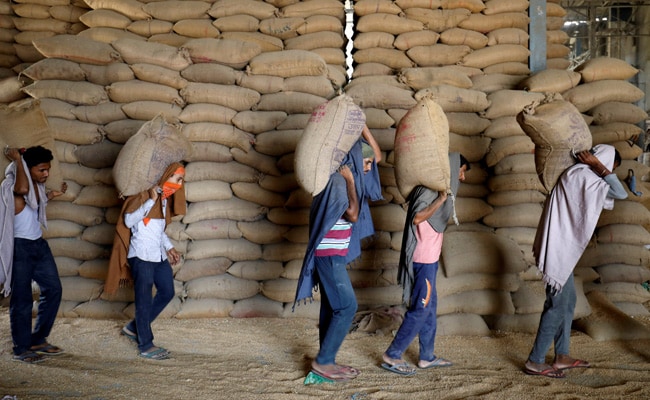
Despite being the second largest producer of wheat in the world, India has never been a major exporter. (Dossier)
Prime Minister Narendra Modi boldly declared that India was ready to “feed the world” after the Russian invasion of Ukraine. Less than four months later, the government must consider grain imports.
Even before Prime Minister Modi made his promise, a record heat wave that began in March threatened India’s wheat production. This reduced production and raised local prices, making everyday life more expensive for hundreds of millions of Indians who use the grain to make staples like naan and chappatis.
Indications that a wheat harvest had not materialized prompted the government to restrict exports in mid-May. State stocks fell in August to the lowest monthly level in 14 years, according to the Food Corporation of India, while consumer wheat inflation is near 12%.
Impending shortages and rising prices now have authorities preparing to buy overseas. Government officials are discussing whether to reduce or abolish a 40 percent import tax on wheat to help flour millers in some regions import grain, people familiar with the matter said, who asked not to be identified. identify them because the conversations are private. This was first reported by Reuters.
The finance ministry did not respond to an email seeking comment. A spokesman for the food and trade ministries declined to comment.
“Since much of the war risk premium has been deducted from world wheat prices, India may look to increase its domestic wheat supply through more imports,” said Sonal Varma, economist at Nomura Holdings Inc. “However, with domestic wholesale wheat prices below world prices, a reduction in import duties will also be essential to make it a viable option.”
Wheat rose to near $14 a bushel in Chicago in early March as war in Europe threatened a major source of world exports. Now, prices have given up all those gains as supply fears ease. They are back below $8, easing some of the pressure on developing economies struggling to feed their people.
Despite being the second largest producer of wheat in the world, India has never been a major exporter. It didn’t matter much either, with foreign purchases at around 0.02% of annual production. The country was practically self-sufficient.
Authorities now expect the 2021-22 crop to reach around 107 million tonnes, down from a February estimate of 111 million. This may still be too optimistic, with traders and flour millers forecasting between 98 and 102 million tonnes.
Government purchases of wheat for the country’s food aid program, the world’s largest, are expected to be less than half of last year’s levels, according to the food ministry. This prompted the authorities to distribute more rice in some states and also to restrict exports of wheat flour and other products.
Consumer wheat inflation has remained above 9% year-on-year since April and rose to 11.7% in July. Wholesale prices rose even more, by 13.6% in July, according to official data. That is creating a headache for the central bank, which is trying to bring global inflation, currently near 7%, below its 6% target.
Wheat is India’s most important winter crop, with planting in October and November and harvesting in March and April. There are also concerns about its rice production, which could be the next challenge to the world’s food supply.
“Cereal inflation is a concern on the back of the lower paddy crop,” said Sameer Narang, an economist at ICICI Bank in Mumbai. The rise in grain prices is likely to continue for some time, he said.
(Except for the headline, this story has not been edited by NDTV staff and is being published from a syndicated feed.)

